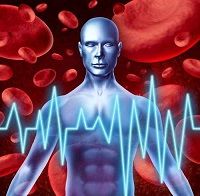Swedish Study Examines Atrial Fibrillation, Transient Ischemic Attack and Stroke Risk
The extremely robust connection between AF and ischemic stroke is well-established, but the strength of the connection between AF and TIA had not been quantified to nearly the same degree.

A new analysis of patients from the Swedish Stroke Register finds that atrial fibrillation (AF) is strongly associated with transient ischemic attack (TIA).
The extremely robust connection between AF and ischemic stroke is well-established, but the strength of the connection between AF and TIA had not been quantified to nearly the same degree.
Investigators looked at medical records of 14,980 Swedish patients who suffered TIA and 44,173 Swedish patients who suffered stroke between July 2011 and June 2013. AF had been previously diagnosed — or was diagnosed in the hospital – in 2,779 (18.6%) of the TIA patients and 13,258 (30.0%) of the stroke patients.
The connection between AF and both TIA and stroke increased with age. Among patients who are 85 years or older, 32.9% of the TIA victims and 46.6% of the stroke victims also had AF. Other factors that were significantly associated with higher rates of AF among both TIA and stroke patients were hypertension, being a non-smoker or history of stroke or TIA.
AF was significantly less common in female TIA patients than in male TIA patients, but it was equally common in both male and female stroke patients.
“AF is highly prevalent not only in ischemic stroke but also in TIA patients, with proportions steeply increasing with age,” the study authors wrote in Stroke. “In both TIA and ischemic stroke, a substantial proportion of patients with AF were discharged without anticoagulant therapy.
Indeed, at discharge, just 64.2% of the TIA patients with AF and 50.0% of the stroke patients with AF were being treated with oral anticoagulants.
“In ischemic stroke, it is not recommended to start anticoagulants immediately after the event,” the study authors wrote. “In TIA, however, direct initiation of antithrombotic and anticoagulant medication is recommended. It is, thus, unlikely that the decision to start oral anticoagulation treatment was postponed.”
The proportion of AF patients receiving oral anticoagulation at discharge decreased significantly with rising age. This was partially justified — but only partially.
“Age is a strong predictor of major bleeding complications and no treatment may be justified in some of the elderly patients,” the study authors wrote. “Still, our data indicate a substantial under-treatment of patient groups with a high risk of stroke.”
The finding of insufficient anticoagulation for AF patients who suffered stroke or TIA supports similar observations from a number of studies.
The shortfall may actually be greater than such research tends to indicate, though, according to a much-cited 2014 paper that appeared in The New England Journal of Medicine.
The authors of that paper compared AF detection rates in stroke patients when using 24 hours of in-hospital electrocardiographic monitoring or 12 months of monitoring within insertable cardiac monitor. Hospital-based monitoring detected AF in 1.4% of patients. Insertable monitors detected AF and 8.9% of patients at the 6-month mark and 12.4% of patients at the 12-month mark.
“Prescription of oral anticoagulants was more than doubled in the [implantable monitor] group, as compared with the control group, at both 6 and 12 months, probably as a result of the higher rates of detection of atrial fibrillation,” the study authors wrote before noting that more treatment produced greater benefits. “Fewer patients had a recurrent stroke or TIA in the implantable monitor group than in the control group.”